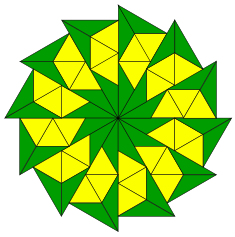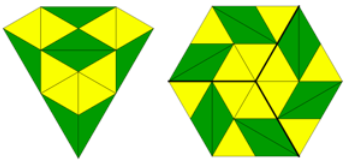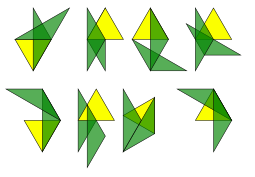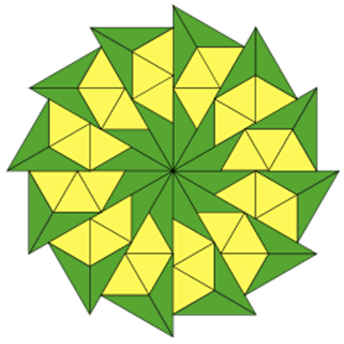Triangle shapes
Problem




Please do send in pictures of the shapes you make, whether they include overlaps or not.
Tell us what you notice about the shapes you've made.
Getting Started
You'll need to print off these triangles to cut out. You could cut them out of tissue paper or overhead transparencies if you want to investigate overlaps.
What makes a 'jewel shape' different from one of the shapes in the first group, do you think?
It's good to talk about what others see in the designs you've made. Sometimes they will see shapes you may not have noticed.
Student Solutions
Hele, Finley and Freddie from Hotwells Primary School managed to make the first shape in this challenge. Here is their picture of it:

Thank you! I like the message they sent us:
We found it easier when we let our imaginations run wild.How wonderful! Perhaps you made some other shapes, then, that you didn't send in? It would be great to see some of them. And we'd love to see any other shapes that anyone else reading this has made.
Teachers' Resources
Why do this problem?
This open-ended activity is designed to allow children to demonstrate their mathematical creativity. With the freedom to use the triangles in any of the three ways, pupils will develop their own criteria to satisfy. They may choose to focus on, for example, aspects of symmetry, or on repeated pattern, or on creating particular shapes, whether in outline or in overlap...
Possible approach
To start the group off, you could make, or print off, one of each suggested "type" of arrangement. It would be a good idea to have one of them partially completed so that you can ask the children how they might continue it and why. In discussing reasons for building up an arrangement in a particular way, you will be offering opportunities for the pupils to use language associated with shape
and possibly symmetry (amongst other things) and to share their ideas with each other. This will stimulate more ideas for making their own.
They could work in pairs, or individually, to make an arrangement of the triangles for themselves and as they work, move around the class, talking to them about how and why they have chosen that arrangement. Having cut out triangles available would be ideal - you could print off this sheet. You might like to ask one or two pupils to make
their design for the rest of the class to talk about. These two particular triangles are chosen as they share a common measurement and you could probe this a little with the children.
